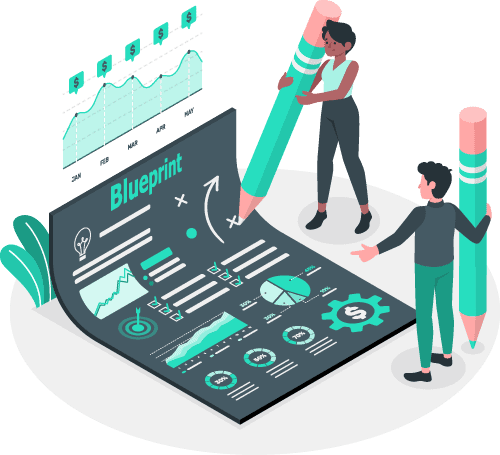I almost launched an automated YouTube channel in 2022. The pitch was seductive: outsource everything, never show my face, and let ad revenue roll in while I slept. I spent two weeks researching tools and nearly dropped $400 on scripts and editors before a forum post stopped me cold. YouTube had quietly changed its Partner Program rules, and channels using reused content were getting demonetized en masse. That near-miss taught me a critical lesson about beginner-friendly online businesses.
The models that sound easiest are often the riskiest when you’re bootstrapping with limited cash and time. This guide identifies nine online business models that drain resources, violate platform policies, or depend on conditions most beginners can’t sustain. You’ll see exactly why each model fails newcomers, and what alternatives actually work for solopreneurs building on nights and weekends.

What Models to Avoid?
Online business models that drain your limited cash, consume disproportionate time, or risk sudden platform bans create unnecessary risk when you’re starting out. The pattern is consistent across models. High upfront capital requirements, strict compliance rules that shift without warning, or complete dependence on algorithms you can’t control.
Risk signals include businesses requiring more than $500 to launch properly, models where a single policy violation can wipe out your account, or ventures that need 20+ hours weekly before generating a dollar. Audience-first models differ fundamentally because you validate demand before investing heavily. You can launch a small digital product or content channel with minimal upfront cost, then let demand signal whether to expand.
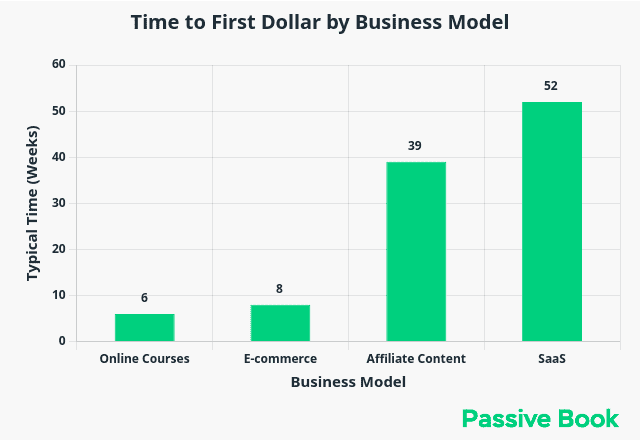
Risky models force you to bet big upfront, while safer approaches let you learn and pivot cheaply.
Why This Matters Now
Most aspiring solopreneurs I talk to have less than $500 to invest and can carve out only 5 to 15 hours weekly around existing jobs. These aren’t arbitrary limitations but real boundaries that determine which online businesses are viable.
Paid advertising illustrates the problem perfectly. Platforms like Meta require sustained budgets to exit the learning phase and deliver stable results. Spending $10 daily might feel manageable, but small budgets prevent the algorithm from gathering enough data to optimize. You’re paying for the privilege of inconclusive tests while your runway shrinks.
The math is unforgiving when you’re bootstrapping. A model that needs $1,000 monthly in ad spend to generate meaningful learning consumes your entire startup capital in two weeks. By the time you understand what’s working, you’re already out of money.
I learned this the expensive way. Burned $600 on Facebook ads in 2014 testing print-on-demand ads. The algorithm taught me nothing except that I was broke.
2025 Landscape Shifts
Platforms tightened content reuse and quality requirements hard throughout 2024 and into 2025. YouTube’s Partner Program now scrutinizes whether channels offer unique value or simply repackage existing material. The shift affects automation models that rely on compiling clips or using AI to generate scripts without adding genuine expertise or perspective.
Marketplace economics simultaneously shifted against sellers. Etsy expanded mandatory Offsite Ads, Amazon introduced new FBA fee structures, and attribution windows shortened across advertising platforms. These changes compound to increase the effective take rate on each sale, squeezing margins that were already thin for beginners operating on small order volumes.
The pattern reveals a consistent direction. Platforms prioritize original creators and penalize arbitrage. Online business models built on exploiting platform mechanics rather than delivering real value face increasing headwinds.
Hard Truths & Myths
The myth persists that paid ads let you test business ideas quickly with small budgets. Reality contradicts this belief, and every webinar selling “FB ads in a weekend” knows it. Tiny ad spends rarely produce stable data. Algorithms need volume to optimize, and $5 daily campaigns usually generate inconclusive noise rather than actionable insights. You’re testing whether you can spend money, not whether your offer converts profitably.
I tested this in when I was doing print on demand. Spent $600 across 60 days at $10 daily on Facebook ads. The learning phase warning stayed active the entire 2 months. My cost per click ranged from $0.40 to $2.80 day-to-day. Completely unstable. I had no idea if the problem was my ad creative, my audience, or just insufficient spend. I was testing whether I could waste money, not whether my offer worked.
Another dangerous assumption is that mastering a platform’s algorithm builds a durable business. Platforms constantly pivot their recommendation systems, content policies, and monetization rules. TikTok might favor one content format this quarter and penalize it the next. The Google core updates devastated sites that had ranked well for years.
Skills outlast algorithms. The ability to write compelling copy, understand customer psychology, or deliver genuine value transcends any single platform’s mechanics. Building on rented land is fine when you’re developing skills that transfer, but dangerous when your entire model depends on rules staying static.
9 Business Models to Avoid
Let’s look at specific examples. These nine models all share the same DNA. They need more capital, time, or platform compliance luck than you have as a beginner. Trust me. I’ve wasted time on most of these.
1. YouTube Automation
YouTube automation sounds perfect until monetization disappears. The model relies on reused content facing serious monetization risks. The distinction matters: creating original faceless content where you share genuine knowledge is fine. Compiling clips from other creators or using AI to generate scripts without unique insight violates YouTube Partner Program policies.
YouTube explicitly flags reused content as ineligible for monetization according to their monetization policies. The platform’s algorithm has become increasingly sophisticated at detecting channels that repackage existing material without adding real value. Channels that passed review in 2022 are getting demonetized in 2025 as enforcement tightens. You might invest months creating content only to discover your channel can’t monetize. That time investment is unrecoverable, and pivoting to compliant content means starting over while competing against established creators.
2. eBay Retail Dropshipping
Listing products from retail stores and having those retailers ship directly to your eBay buyers violates platform policy. This isn’t a gray area requiring interpretation. eBay’s dropshipping policy explicitly prohibits retail-to-retail arrangements where you purchase from one retailer to fulfill orders on their platform.
The policy exists because retail dropshipping creates poor buyer experiences. Packages arrive with competitor branding, return addresses don’t match seller locations, and inventory availability is impossible to guarantee.
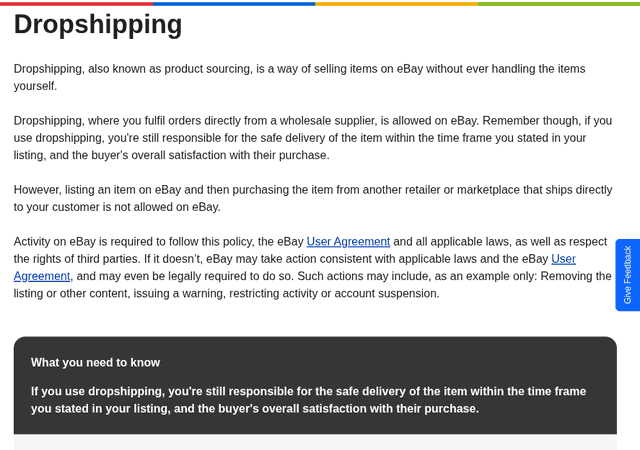
When buyers complain or retailers cancel orders, your account accumulates defects that trigger limits or suspension. Account restrictions compound quickly. Your first few policy violations might result in warnings, but eBay’s automated systems can restrict selling privileges or terminate accounts for repeated issues. Rebuilding seller standing takes months of perfect performance, time you can’t afford when you’re trying to generate initial income.
3. Crypto Trading Bots
Trading bots promising guaranteed returns signal scams rather than sustainable business models. The fundamental problem is that genuine algorithmic trading requires sophisticated infrastructure, market access, and capital that individual beginners simply don’t possess. Services selling “automated profit systems” to novices are almost universally fraudulent. The FBI’s Internet Crime Complaint Center reported $6.6 billion in cryptocurrency-related losses during 2024. Investment scams accounted for the largest share, with automated trading platforms representing a large portion.
I watched this play out in a Facebook group I was in. Three members invested $500 to $2,000 each in a “guaranteed daily returns” bot. Within 90 days, all three had lost access to their funds. The Telegram support channel went silent, and the website disappeared. The appeal is understandable when you’re looking for passive income, but the math never works. Legitimate trading operations don’t need to sell access to retail investors. If a bot actually generated consistent returns, the operators would simply use their own capital and scale profits instead of charging you monthly fees.
4. High-Ticket Coaching
Selling $5,000 coaching packages before you’ve coached anyone creates a dangerous debt trap. The model relies on selling transformation before proving you can actually help clients achieve specific outcomes. Beginners attracted to coaching often underestimate the expertise required to justify premium pricing.
The Federal Trade Commission issued more than $12 million in refunds in July 2024 to consumers harmed by Zurixx’s real estate coaching scheme. The case illustrates a common pattern: aggressive sales tactics, inflated income claims, and programs that fail to deliver promised support. Victims often financed coaching on credit cards, compounding losses with interest charges.
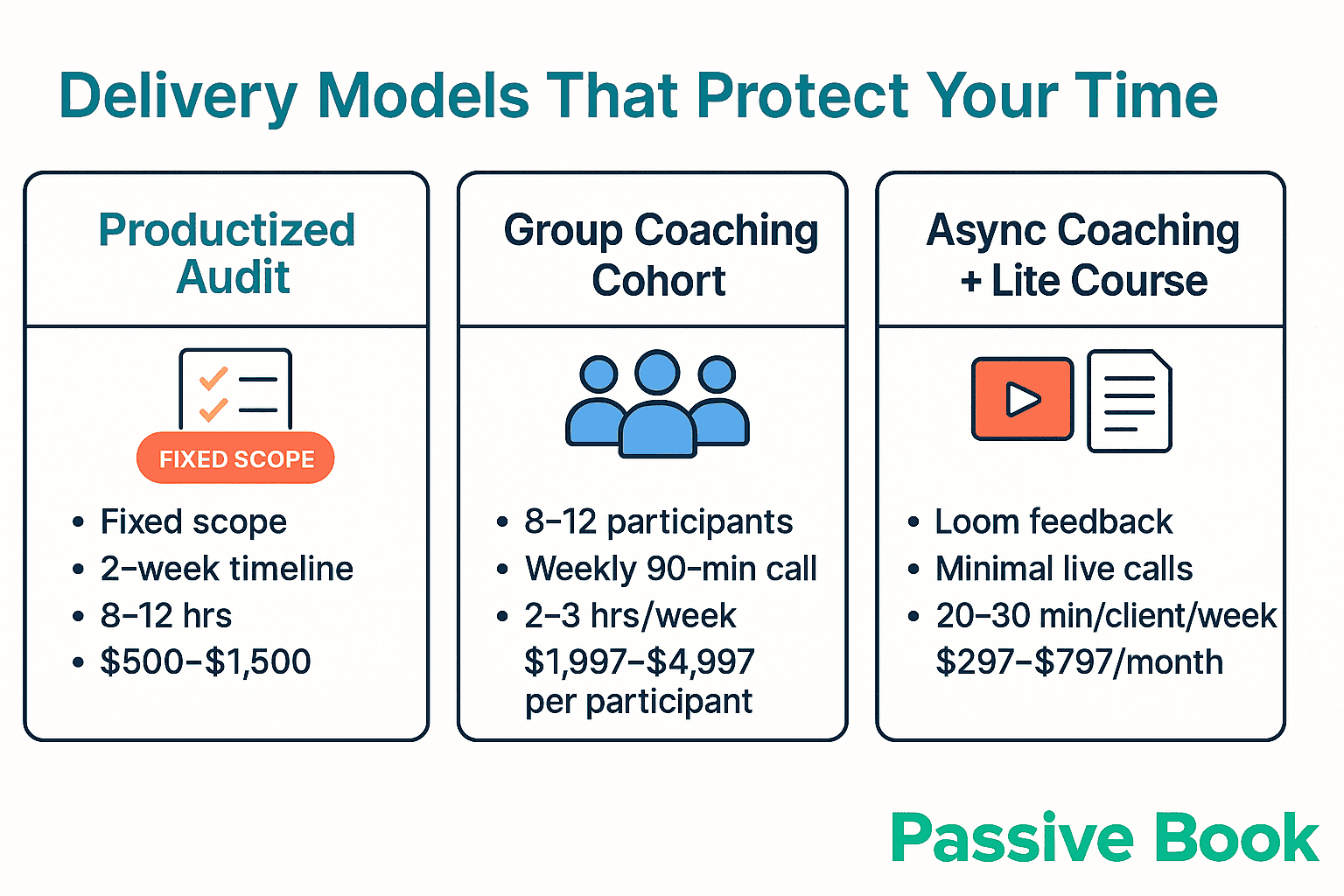
The validation path matters. Starting with lower-priced offers or even free coaching lets you prove your methodology works before asking clients to invest heavily. Building a portfolio of verifiable results creates legitimate authority, while jumping straight to high-ticket sales requires aggressive tactics that damage your reputation.
5. Meta Ads Arbitrage
Meta’s advertising platform requires around 50 optimization events weekly to exit the learning phase and deliver stable performance. This technical requirement creates a brutal math problem for beginners with limited budgets.
If your cost per acquisition runs $20, the math is brutal. 50 events × $20 = $1,000 weekly just to generate enough conversions for the algorithm to optimize. Arbitrage models compound this challenge by adding margin pressure. You’re buying traffic at retail rates and trying to immediately flip visitors for profit, either through affiliate offers or by building an email list for future monetization. The spread between your ad cost and revenue per visitor is thin, meaning you need high volume to see meaningful profit.
Small budgets create a catch-22 situation. Spending $10 daily generates insufficient data for optimization, resulting in higher costs per result. But scaling to effective budgets consumes your entire startup capital before you’ve validated whether your offer converts profitably. You’re paying Facebook to learn that you needed more money to learn anything useful.
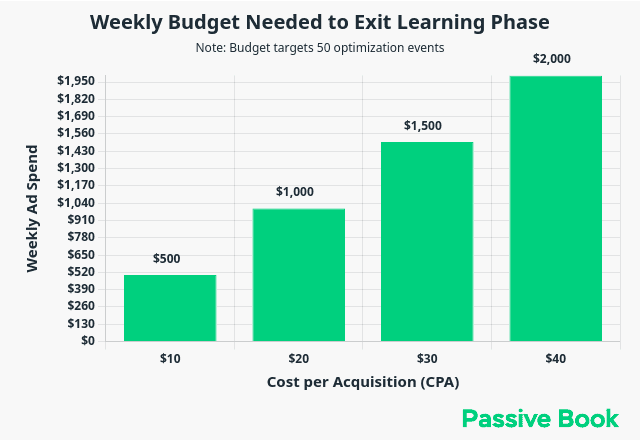
6. Amazon FBA Flips
I almost tried Amazon FBA after I saw the sales video of a course called Amazing Selling Machine. Here’s why I’m glad I didn’t. You’re buying inventory upfront, shipping products to Amazon warehouses, then paying storage fees while waiting for sales. The 2025 fee structure compounds referral fees, fulfillment costs, storage charges, and return processing into a fee stack that dramatically reduces per-unit profit margins.
The capital requirement creates immediate risk. Buying 100 units of a product at $10 each means $1,000 locked in inventory before making a single sale. If the product doesn’t sell quickly or if you misjudged demand, you’re paying long-term storage fees while your capital remains trapped. Returns add another layer of loss, with fees charged for processing and potential inventory damage.
Competition intensifies the challenge. Popular product categories on Amazon feature dozens of sellers offering nearly identical items, forcing price competition that erodes margins further. Private label approaches require even more upfront investment in unique products, packaging, and branding. Beginners face a difficult equation: enough capital to compete effectively but not so much that a failed test threatens their entire budget.
7. Etsy Print-on-Demand Tees
Commodity t-shirts face crushing fee pressure on Etsy that makes profitability nearly impossible for beginners. The platform charges transaction fees, payment processing fees, and mandatory Offsite Ads fees on orders over $300 annually. Print-on-demand services add their base costs and shipping, leaving thin margin before you’ve spent anything on design or promotion.
The competition is saturated. Thousands of sellers offer similar print-on-demand apparel, often using the same base products from providers like Printful or Printify. Differentiation requires exceptional design skills or niche targeting, but most beginners start with generic motivational quotes or trending phrases that hundreds of other shops already sell.
Customer acquisition costs exceed margins quickly. Etsy‘s internal search favors established shops with sales history, pushing new stores into paying for promoted listings or external traffic.
If you’re spending on ads to drive sales through a high-fee marketplace with thin margins, the economics rarely work unless you achieve scale. Most beginners never reach that point.
8. SEO Affiliate Sites
Google’s March 2024 core update destroyed thousands of affiliate sites overnight. Building income solely from search engine optimization creates fragile businesses vulnerable to algorithm updates. SISTRIX analysis of Google’s March 2024 core and spam updates showed review and affiliate sites losing visibility overnight. Sites that ranked profitably for years saw traffic drop 60% to 90% with no clear path to recovery.
The model’s fundamental weakness is complete dependence on one traffic source you don’t control. Google continuously refines what content ranks well, and affiliate sites face particular scrutiny. The search engine aims to surface content from perceived authorities rather than sites that exist primarily to generate affiliate commissions. Thin content or obvious monetization focus triggers algorithmic penalties.
Time investment compounds the risk. Building an SEO site that ranks well takes six to twelve months of consistent content creation before generating meaningful traffic. Beginners investing hundreds of hours face the reality that a single algorithm change can eliminate their income before they’ve recovered their time investment, let alone achieved profitability.
9. Surveys and Microtasks
Platforms like Amazon Mechanical Turk pay micro-amounts per completed task, creating an effective hourly rate far below minimum wage in most developed markets. CloudResearch data shows MTurk workers averaged around $4 to $5 per hour, ranging from roughly $2 to $9 depending on task selection and efficiency.
The business model doesn’t exist. Microtask platforms position you as a worker, not an entrepreneur. You’re trading time directly for small payments without building any asset, audience, or skill that compounds over time.
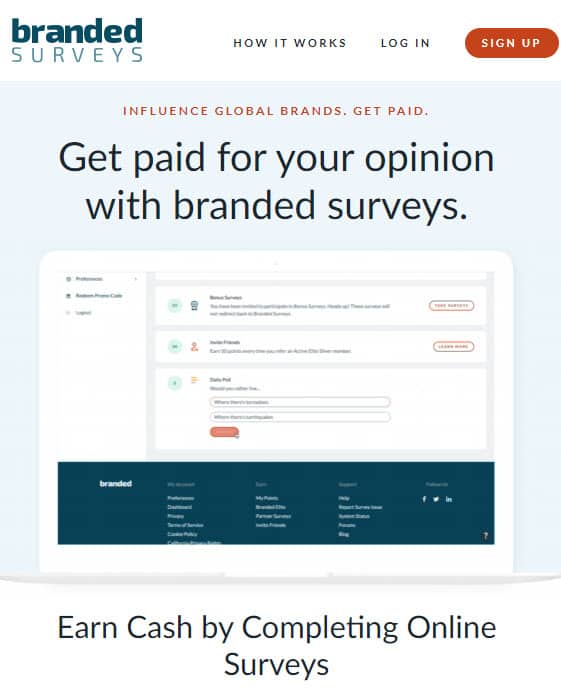
The ceiling is fixed by how many tasks you can complete, and increasing earnings requires simply working more hours at the same low rate. Opportunity cost matters enormously when you have limited hours available. Time spent completing surveys could instead build a freelance portfolio, create content that attracts clients, or develop a product you can sell repeatedly. Microtask work offers immediate but tiny payments while preventing investment in activities that could generate real income.
Safer First Steps
So what should you do instead? Start smaller and test faster.
Audience-first content models let you build leverage while validating demand. Start a focused blog, YouTube channel, or email newsletter around a specific problem you understand deeply. Create valuable content consistently for 90 days while building an email list. Once you have 500 subscribers actively engaging with your content, you’ve validated demand for paid products without spending on inventory or ads.
Micro-digital products offer another low-risk entry point. A $27 PDF guide, checklist template, or Notion dashboard takes 10 to 20 hours to create and can sell repeatedly without additional work. Validate the concept first by pre-selling to your initial audience or offering beta access. If 10 people buy before you’ve finished building, you’ve confirmed demand worth pursuing.
Print-on-demand with unique designs works when you bring genuine creative skills or niche knowledge. Skip generic motivational quotes. Instead, create designs for specific communities you’re part of. A mechanical engineer creating technical diagrams for other engineers. A parent making organizational printables for other busy parents. The specificity creates defensibility that commodity sellers lack.
Budget discipline protects your runway. Keep initial tool costs under $200. Domain ($15), basic hosting ($60 annually), email provider free tier, and Canva Pro ($120 annually). The remaining $300 of your $500 budget stays in reserve. ConvertKit‘s free tier handles your first 1,000 subscribers. WordPress on shared hosting gives you a platform you control.
Time allocation should match your constraints. Content creation fits into 5 to 10 hours weekly. Write one article Monday and Wednesday evenings (2 hours each). Film one YouTube video Saturday morning (3 hours). Promote across social platforms Sunday (2 hours). That’s 9 hours building assets that compound, not trading hours for dollars.
FAQs
What Is the Best Online Business to Start for Beginners?
Content-based businesses offer the best leverage for bootstrapping solopreneurs. Start a focused blog or YouTube channel around a problem you’ve solved personally, then monetize through digital products and affiliate partnerships once you’ve built an engaged audience. This model requires minimal capital while building assets that generate income repeatedly without trading hours for dollars.
What Is the Easiest Business Model to Start?
Simple digital products like templates, checklists, or mini-guides need almost no setup and zero inventory. Create one valuable resource solving a specific problem, list it on Gumroad or your own site, and start promoting it through organic content. Each sale requires no additional work from you, and the product improves based on buyer feedback.
What Is the Riskiest Business to Start?
Cryptocurrency trading schemes and platform policy violations create the highest risk of total loss. The FBI reported $6.6 billion in crypto-related losses during 2024, with many victims losing their entire investment. Similarly, eBay’s retail dropshipping prohibition shows how policy violations can wipe out your account and income overnight.
What to Avoid When Starting a Business?
Avoid high advertising dependence when you’re bootstrapping. Meta’s learning phase requirements demand around 50 optimization events weekly to stabilize performance, translating to roughly $1,000 weekly ad spend at typical conversion costs. Also avoid ultra-low-paid microtasks where MTurk workers averaged around $4 to $5 per hour, preventing you from building any real business asset with your limited time.
What Next?
You now understand which online businesses create unnecessary risk when you’re starting with limited time and capital. The models outlined above share common patterns: they demand resources beginners don’t have, depend on factors outside your control, or violate platform policies that can eliminate your income instantly. Recognizing these patterns helps you evaluate new opportunities with healthy skepticism.
Starting an online business is challenging regardless of which path you choose. The difference is whether you’re fighting uphill against structural disadvantages or working with models that reward consistent effort. Audience-first content and validated micro-products let you build leverage while learning, rather than betting everything on an unproven approach.
Focus on building one validated offer before exploring adjacent opportunities. A single service that generates your first $500 monthly teaches you more about sustainable online business than cycling through multiple high-risk models. Share this article using the buttons below if you found these warnings valuable, and drop a comment telling me which model you were considering before reading this. Your answer might help another beginner avoid a costly mistake.
Share this post with your friends & followers: